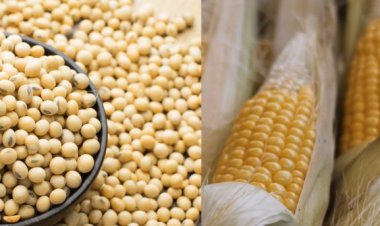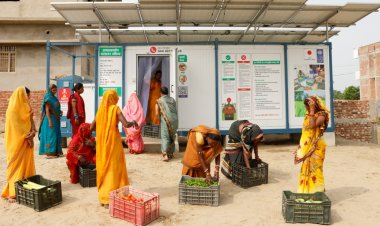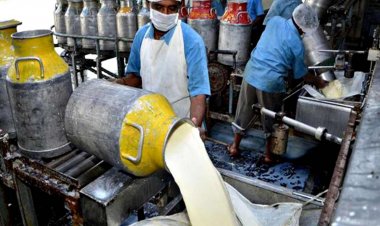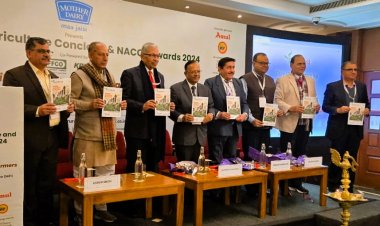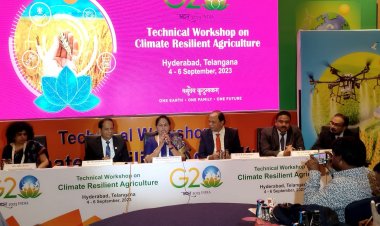Making technology relevant: Interventions for transforming Indian agriculture sector
Today, the adoption and use of technology throughout the agriculture supply chain is crucial. Three broad targets – productivity, profitability and predictability or the 3Ps – need to be achieved through technological intervention.
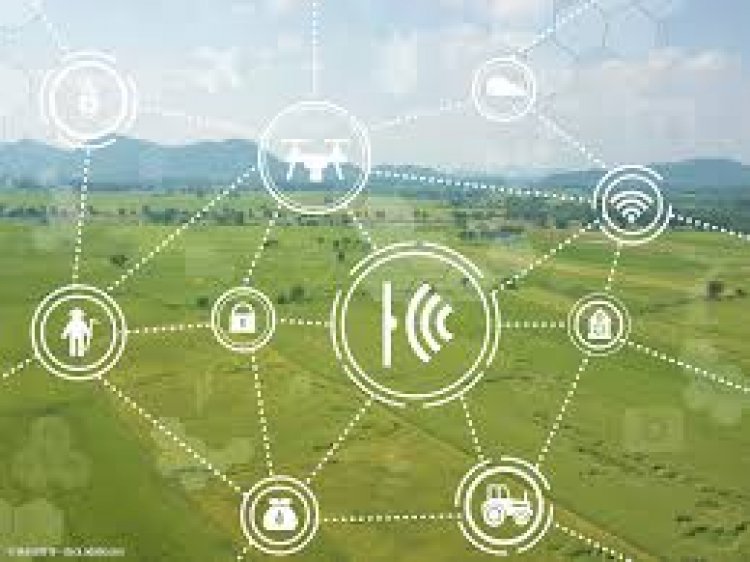
As the world is grappling with the Covid-19 pandemic and the ensuing restrictions on the scope of physical economic activities, technology is being leveraged to make various ends meet. However, while both manufacturing and services sectors are fast adapting to technology and reaping its benefits, the story of the agriculture sector is slightly different.
India’s agriculture sector suffers from several paradoxes. While the sector provides employment to nearly half of the country’s workforce, it has the least contribution to India’s gross value added. India is one of the largest producers of various food grains in the world, yet the per capita calorie intake in both urban and rural areas is less than the average calorie requirement. Furthermore, food grains are rotting in warehouses. Thus, there is an obvious disconnect between the demand and supply centres, which can be bridged by harnessing technology.
Today, the adoption and use of technology throughout the agriculture supply chain is crucial. The following paragraphs discuss three broad targets – the 3Ps – that need to be achieved through technological intervention.
The 3Ps
Admittedly, although there has been a slight increase in food grain production over the last 2-3 years, the decadal data exhibits a cyclical trend with occasional troughs of poor harvest. Moreover, an increase in production may result in improving the stock of food grains, but not necessarily generate higher income for the farmer. The latter issue may be addressed by enhancing the 3Ps: productivity, profitability, and predictability.
Productivity
High production may not always imply efficiency in farming methods, which is often measured by productivity. Incidentally, according to a report by NITI Aayog, while India is the second-largest producer of rice (after China), the yield per hectare (kg/hectare) is much lower than that in the rest of the subcontinent.
Technology must play a multi-layer role in productivity enhancement in the following ways:
- R&D on developing sustainable, better yielding seeds and agri-inputs
- Ongoing research on region-specific crop and cropping pattern diversification and farming practices (including resource management)
- information dissemination to farmers
- real-time handholding in adoption
Both the government and the private sector are shouldering the responsibility of R&D by adequately leveraging technology. Mobile- and TV-based technology platforms aimed at information dissemination are also mushrooming in various parts of the country. However, technology is yet to play a key role in providing adoption assistance to farmers, which is the most crucial link in the chain.
Profitability
Farmers can enhance profitability by either reducing cost or by fetching higher prices for their produce or both. Often, farmers sell their output at lower-than-average prices without identifying the quality grades of products. Some new-age agriculture ventures, while limited to metro and tier-1 markets, grade farm-procured produce and sell to end customers/retailers. One of the reasons that most farmers in India grow food grains is due to the certainty of procurement by the government, which ensures that the farmer has a buyer. Thus, there is a need to bridge the gap between the farmers and the markets, and to provide product and market information to the farmers through technology. Techniques such as direct-seeded rice (DSR), which save on cultivation costs, also benefit farmers. The Kisan Vikas Kendras (KVKs) and other stakeholders should review the package of practices of all major crops with respect to the use of water and agri-inputs. Finally, the use of technology for monitoring and reducing food loss and wastage at farmgate may also help in improving the economics for farmers.
Predictability
The third important aspect is predictability – about both farm production and crop prices. Price discovery is important for farmers for better price realization. The new law on the Farmers’ Produce Trade and Commerce (Promotion and Facilitation) Ordinance, 2020, allows farmers to sell outside the Agricultural Produce Marketing Committee (APMC) mandis. While this breaks the perceived monopoly of the APMC mandis, it is likely that the farmers may still rely on mandis for price discovery. In such a scenario, it is important to provide technology-based platforms on the lines of the existing National Agriculture Market (e-Nam) portal (which serves as a national unified market for APMC mandis) for farmers to access information on markets and prices.
Although there are existing initiatives for both market- and weather-related information, there is a need to scale up their use. One of the first few companies to foray in this domain was ITC, which started the IT (VSAT linkages)-based e-chaupal network, consisting of village-level real-time information dissemination on price discovery. There are several other digital platforms that provide a wide spectrum of services to farmers, such as Eruvaka, MyRML, AgroStar, AgriAPP and CropIn.
Despite the large potential user-base, most of the agriculture technology start-ups and initiatives have not been able to scale up due to the heterogeneous nature and vast size and spread of the agriculture sector in India. Moreover, the number of farmers using smartphones is very less and 3G/4G mobile data penetration is not adequate. Therefore, there is a need for a great degree of customization (including using voice and SMS), which makes scaling up both costly and difficult. Venture capitals (VCs) and private equities (PEs) are now focusing on this space and many start-ups are raising funds for expansion. However, for start-ups to grow and become ‘acceptable’ by various farming communities, their focus must go beyond data collection for commercial use to solving farmers’ actual problems. Lastly, the government’s role in creating a robust 3G/4G network will be a basic prerequisite for this ecosystem to flourish beyond India’s major metro cities.
(Ritwik Bahuguna is Partner, Wazir Advisors, and Founder, Roots Foundation. The views expressed here are his own.)



 Join the RuralVoice whatsapp group
Join the RuralVoice whatsapp group


















